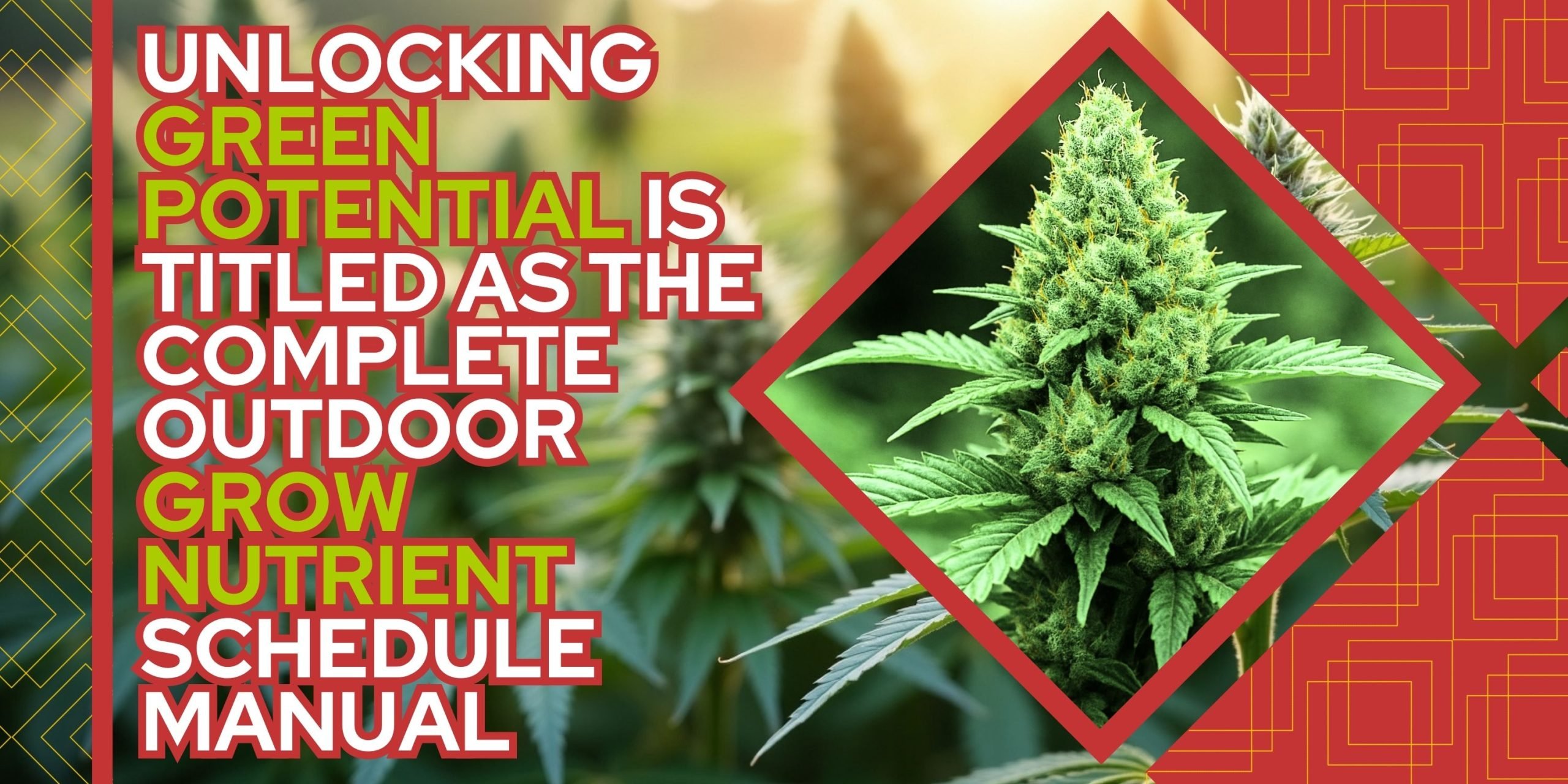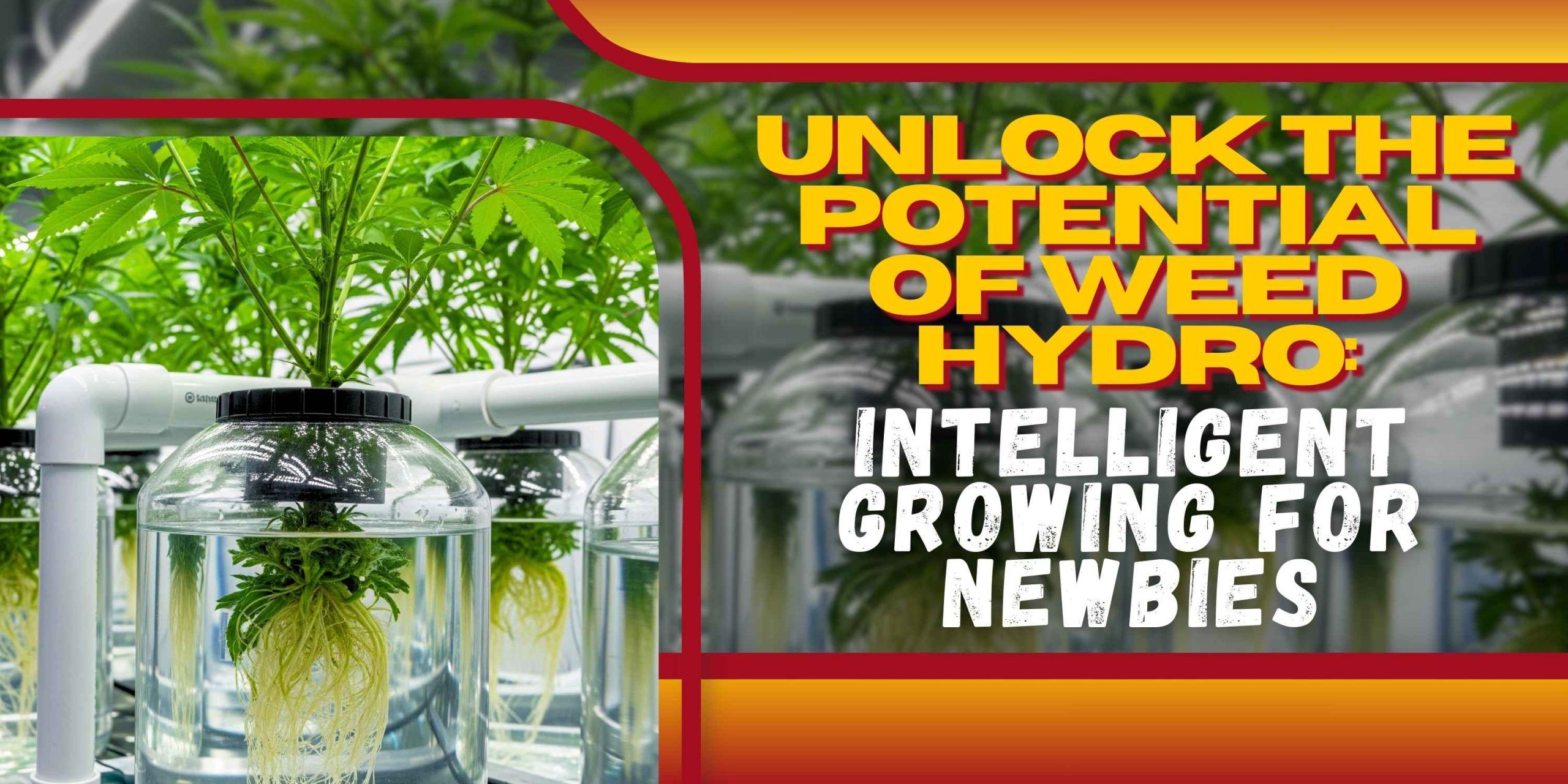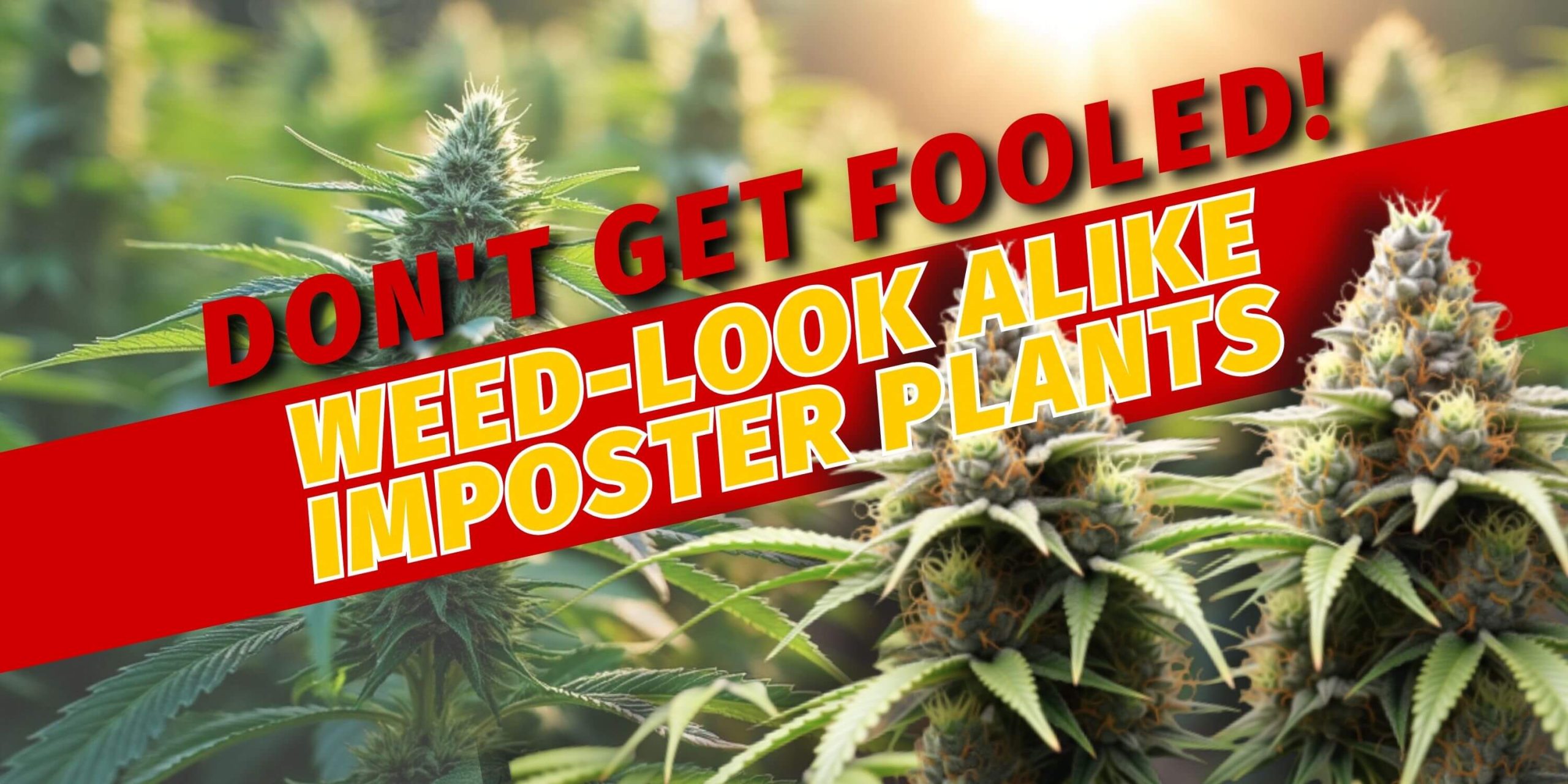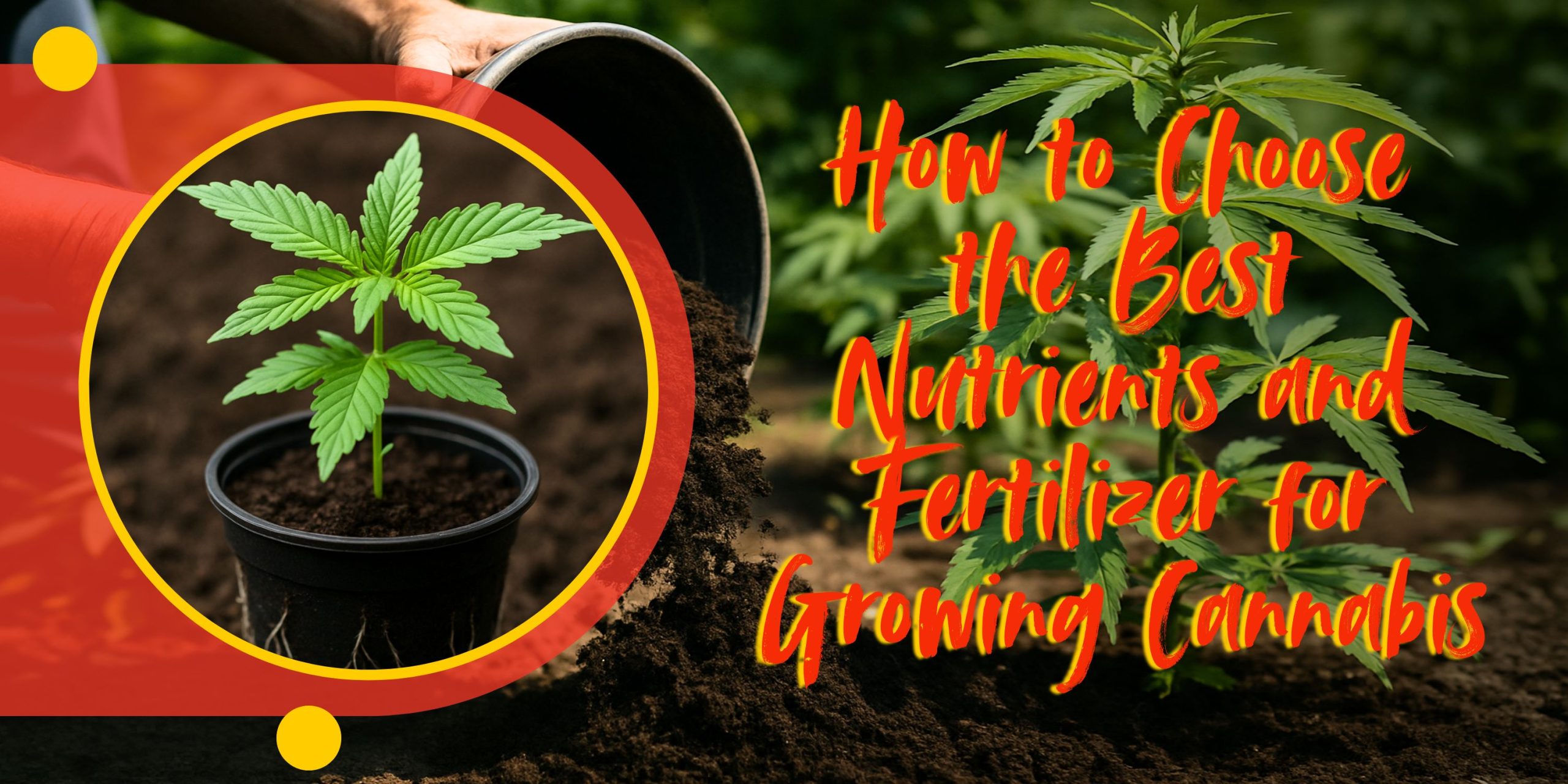Gardening marijuana outdoors is a one-of-a-kind experience—but getting it done is all about providing your crops with what they require, when they require it. And that’s where an effective outdoor grow nutrient program comes into play. In this article is your step-by-step guide on the correct way to feed your marijuana plants at each stage of growth.
Seedling to bud, nutrient requirements of cannabis crops change. We’ll cover when you should be on nitrogen-laden nutrients, when you should be adding potassium, and how you can keep your soil in top condition so your crops can stay healthy and robust. New or old pro, knowing your outdoor grow nutrient schedule will make the difference between a disappointing harvest and flowers that blow your mind with flavor and THC levels.
Ready to unlock your outdoor weed potential? Let’s begin with the basics of cannabis plant nutrient and get your garden off to a great start.
When to Feed Seedlings: A Cannabis Growth Guide
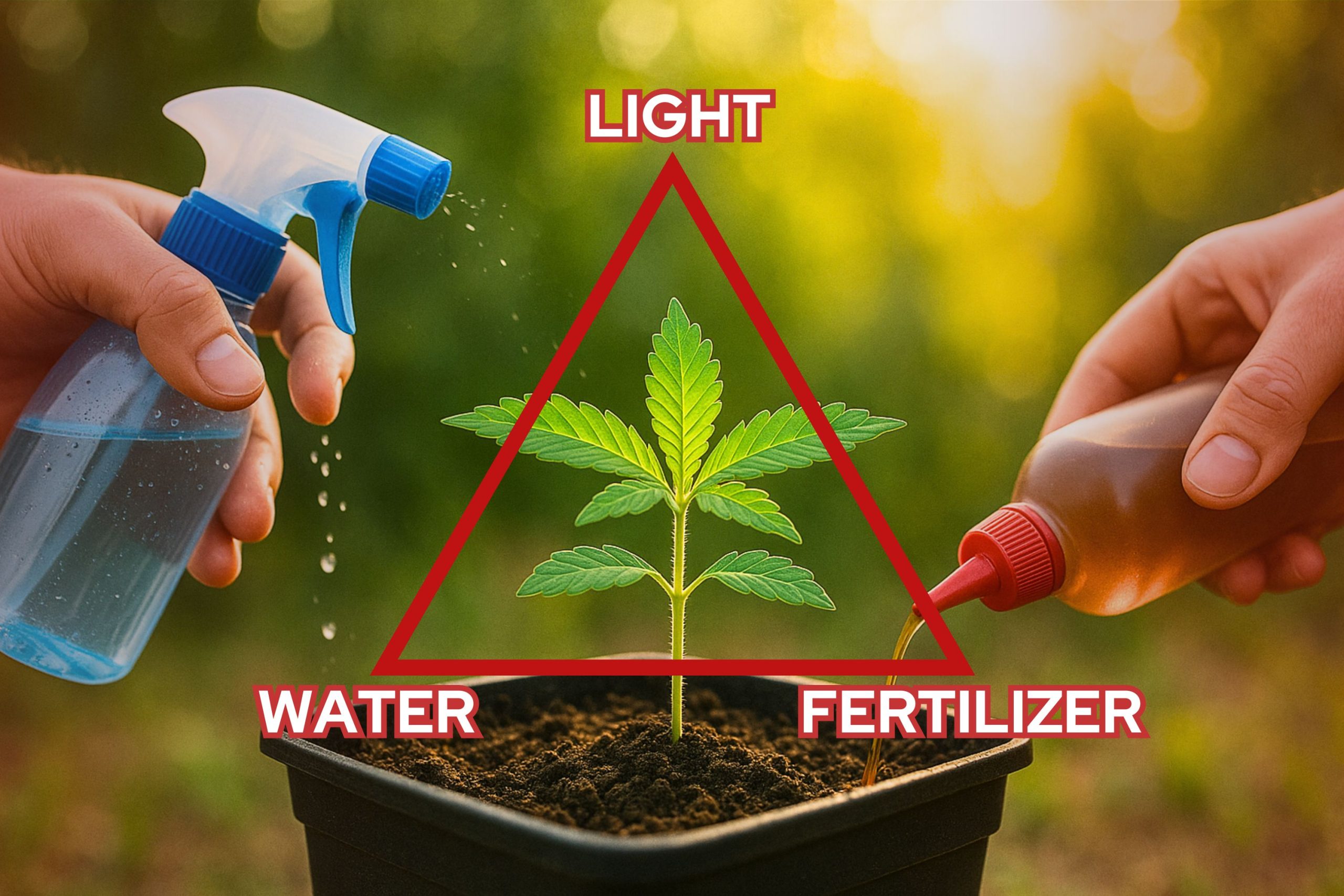
Cultivating weed is great, but seedlings are all about maintaining that fine balance of water, fertilizer, and light. Perhaps one of the most common questions asked by budding growers is: how often between fertilizing seedlings? Timing in this case is precisely crucial since the seedlings are delicate and excessive in terms of nutrition can easily overwhelm them. As it is clear from going through this guide, there is a precise guideline on how and when to initiate marijuana plant nourishment and guidance on how to stick with the ideal marijuana nutrient cycle. Seedling Development
Of course, as a lead-in to talking about feeding calendars, it is a good idea to know what seedlings are and what to do with them to make them survive. Seedlings are the first stage of a cannabis plant, usually 2–3 weeks after germination. They develop their initial leaves—cotyledons—and start to develop small sets of “true leaves” during this period.
It’s during this phase that cannabis seedlings are extremely susceptible. They have tiny root systems and nothing but heat, light, and water. They will be invaluable later in plant life but at the beginning phase in the first few weeks or days, worse than it is good is more fertilizer.
When to Start Feeding Seedlings
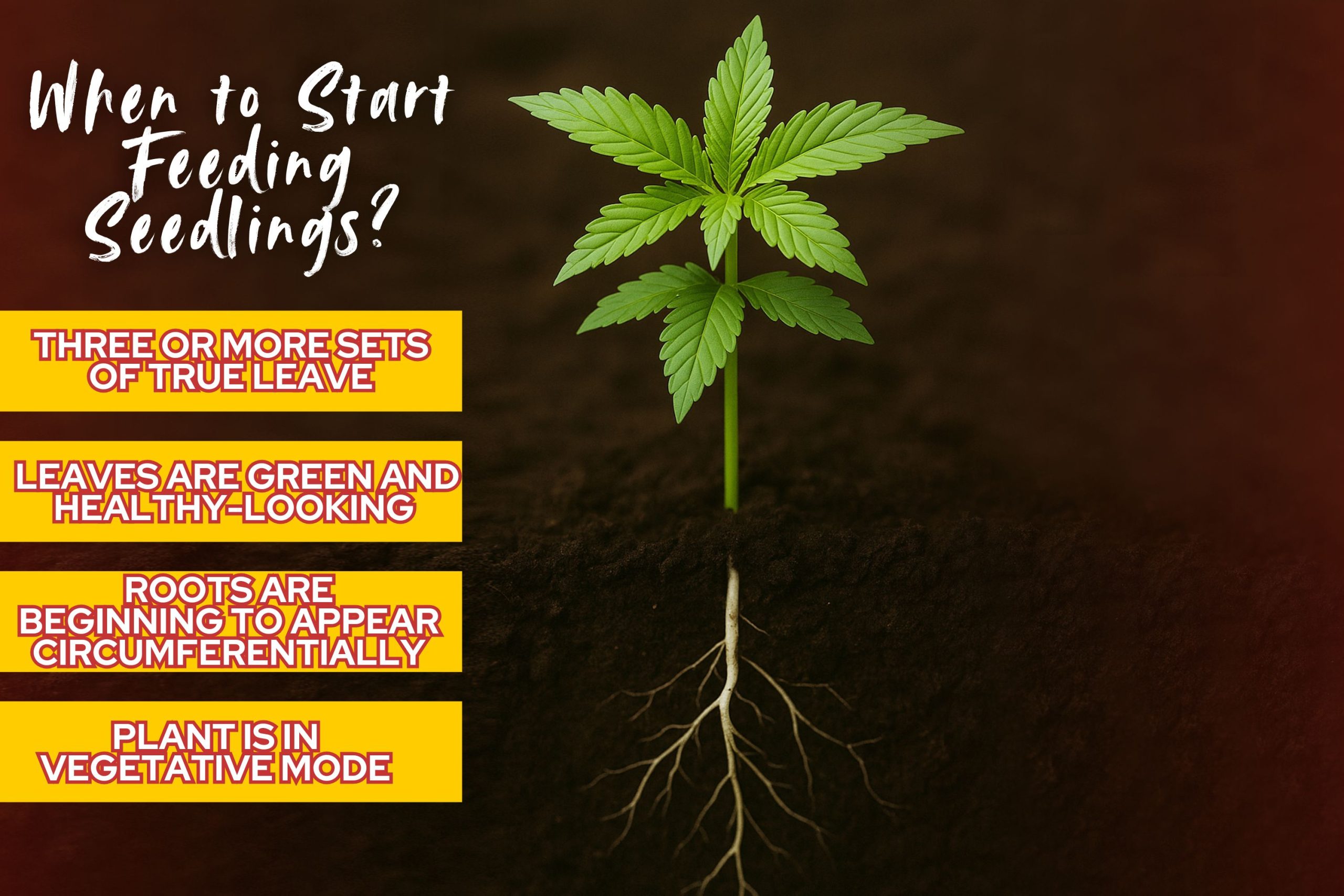
So then to the million-dollar question: when to start feeding seedlings?
Generally, you may begin feeding when your seedling has 3–4 sets of true leaves. That’s usually week 2 or week 3 depending on the condition of your grow and the strain. Cotyledons and reserve nutrition stored in the seed are sufficient at this stage.
The following are the signs that your seedling is ready for the first feeding:
- It has three or more sets of true leaves.
- Leaves are green and healthy-looking but growing very slowly.
- Roots are beginning to appear circumferentially around the pot (if one is being used).
- Plant is in vegetative mode, a phase of active development and growth.
To feed cannabis at this stage will cause “nutrient burn” with yellowing or browning at leaf tips and rolled-up leaves. Underfeed first instead of overfeed.
Choosing appropriate nutrients for seedlings
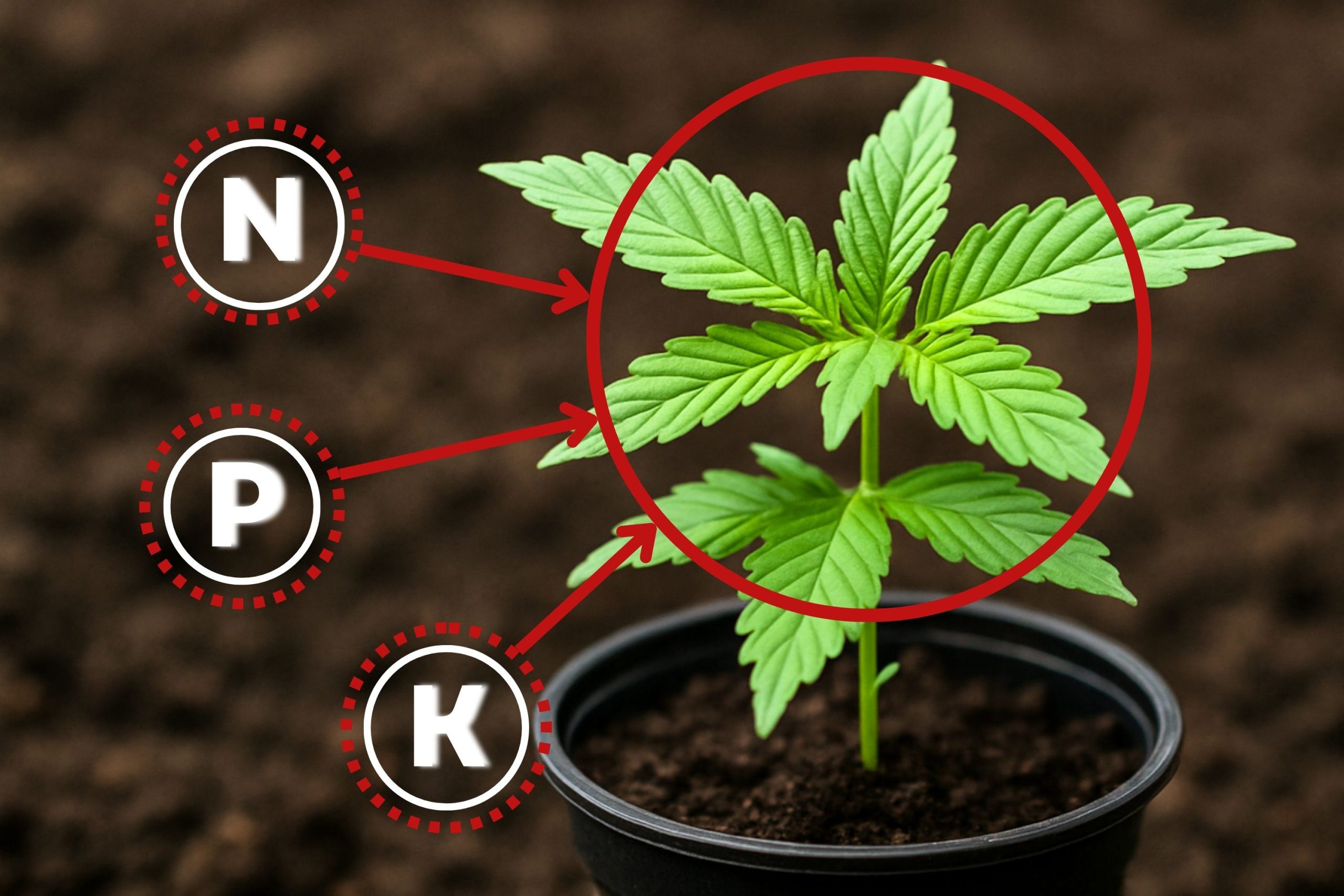
Seedlings will require extremely low nutrient solutions. Nutrient companies will have all marijuana nutrient programs and suggest how much to use at any stage of growth. Seedlings will usually suggest beginning off at 25% full strength.
The three main nutrients that marijuana plants require are:
- Nitrogen (N) – leaf and total plant growth
- Phosphorus (P) – stimulates root development and energy transfer.
- Potassium (K) – maintains overall plant operations, i.e., water uptake and resistance to diseases.
Second-stage nutrient solutions need to include calcium, magnesium, as well as trace elements. Don’t do this in excess on your first stages, though. Organic growers like to introduce finesse nutrients from an early beginning through the help of compost teas or seaweed extracts.
Feeding Cannabis: Tips for Success
When you think that the time is right to introduce cannabis feeding in the seedling or first veg growth phase, you should observe how your plant reacts to it. Strains vary in how they react, and light, heat, and humidity will affect nutrient uptake.
Some useful tips:
- Begin low, slow: Begin at ¼ solution strength. Increase strength gradually after 3–5 days as soon as your plant responds positively.
- Burn no nutrients: Curled leaves or yellowing leaves could be an indication of over fertilizing. Flooding the soil with freshwater that has a pH that is balanced will leach out additional nutrients in the soil.
- Monitor pH levels: Cannabis prefers to grow in barely acidic to moderately acidic soil with a pH of 6.0–6.5. Nutrient lockout (your plant cannot utilize them) usually happens because of imbalanced pH.
- Use purified water: Blend the nutrients with purified or distilled water. Tap water contains minerals that will pollute the nutrient solution.
Following a Cannabis Nutrient Schedule
When following a cannabis nutrient schedule, you’ll never over- or under-feed. Most decent quality nutrient producers have well-organized tables with dosages recommended weekly for seedling, veg, and bloom phase.
A simple feeding plan can be:
- Week 1–2 (Seedling to Germination): Only pH-balanced water.
- Week 2–3 (Seedling to Early Veg): Fertilize ¼ of veg feed strength when there are 3–4 true leaves.
- Week 4–5 (Veg Growth): Fertilize to 50% fertilizer strength if healthy growth.
- Week 6+ (Full Veg Growth): Switch over gradually to full-strength fertilizers as advised.
Always tweak your plan to the condition of your plant and never employ a “one-size-fits-all” plan. Any particular strain will be hungrier or more thirsty for nutrients than another, and some even do well on poorer quality nutrients.
Feeding Cannabis Grown in Soil vs. Hydroponics
If you’re growing cannabis in soil, remember that high-quality potting mixes often contain nutrients that will last for 2–3 weeks. In this case, feeding might not be necessary until the plant shows signs of deficiency or slowed growth.
Hydro plants aren’t planted but submerged, so you are going to have to introduce the nutrients in advance before that because the roots don’t absorb any nutrients from the substrate itself. But with hydro too, you are going to have to wait until the real leaves come out before you will start introducing doses of light nutrition.
Checking and Tweaking Along the Way
Pack leaders are listening. Even on a feeding schedule, notice what your cannabis plant appears and acts like. Watch for deficiencies (pinched tips, soft leaves, pale green leaves) and toxicities (burned tips, dark green leaves, curl).
Keeping a feeding log is also very helpful. Log the nutrient you provide, how frequently or what when you feed the plant, and what occurs with the plant as a response. You would naturally know what your plant requires within some time.
Final Thoughts
Having some sense of timing when to start fertilizing seedlings with nutrients can really bring massive rewards on your quest growing cannabis. Accuracy and patience are the guidelines here—don’t over-fertilize young plants until they’re darn ready. Hold out and wait until the right amount of true leaves, start weakly, and see how your plant reacts.
By understanding how to properly begin feeding cannabis, and by sticking to a careful cannabis nutrient schedule, you’ll set your plants up for strong vegetative growth and bountiful harvests down the line.
Remember: healthy seedlings make for happy, productive cannabis plants.
Outdoor Grow Nutrient Schedule – Frequently Asked Questions (FAQs)
1. What is a nutrient schedule for outdoor growing?
A nutrient schedule is a feeding plan that outlines what nutrients to give your plants and when—based on their growth stage (seedling, vegetative, flowering). It ensures your plants get the right amount of essential nutrients at the right time.
2. Why is it important to follow a nutrient schedule?
A regimen prevents overfeeding or underfeeding, resulting in toxicities or deficiencies. It also produces healthier plants, increased yield, and tastier produce.
3. How often do I feed my garden crops?
Feed every one to two weeks, depending on plant stage and what you are feeding. Always read the instructions and observe responses from your plants.
4. What will my plants require at each stage?
- Seedling: None; weak root stimulator or light starter fertilizer.
- Vegetative Stage: Nitrogen (N) dominated to promote leaf growth.
- Seed and Fruit Formation Stage: Nitrogen deficient, but phosphorus (P) and potassium (K) dominated to promote bud and fruit development.
5. Is indoor and outdoor nutrition the same?
Yes, the majority of nutrients are in both categories. Outdoor plants will need more due to being larger and with stressful weather conditions. Properly proportion dosages and test soils for accuracy.
6. How do I modify my routine with changing weather?
Under hot conditions, the plant will require additional light and watering feeding. Under cold conditions, reduced growth should be represented by lighter frequencies of feeding. Be always sensitive to your plant response and soil moisture.
7. Do I flush plants outdoors before harvest?
Yes, do bypass feed and wash with fresh water 1–2 weeks before harvest to remove the plant of reserved nutrients, especially if you are on man-made feeds. This will add to taste and smoothness.
8. What happens if I miss a feeding?
Don’t worry—just miss the routine. Don’t double up to “catch up” because it leads to nutrient burn. Your plants won’t even notice a miss or two.
9. Can I create my own nutrient mix?
Certainly. Worm castings, fish emulsion, compost teas, or other organic materials are employed by some growers. Just be sure to do research on proper ratios and watch for plant reaction.
10. How will I know whether I am overfertilizing or under fertilizing?
- Over Fertilizing: Leaf burn, dark green leaves, crusted-on surface on potting medium.
- Under Fertilizing: Wilting leaves, stunted growth, pale stems.
Use plant indicators as a guide and modify them accordingly.
11. Does the plant have a personal schedule of nutrients?
Yes. Marijuana, peppers, herbs, and tomatoes are special. Don’t ever forget to factor in the modification of your schedule of nutrients to plant type to achieve maximum effect.
12. Is pH an issue in the case of exterior nutrients?
Yes! pH influences nutrient acquisition. Attempt to keep soil pH between 6.0 and 7.0. Calibrate and keep in range the pH meter or use a soil test kit.


